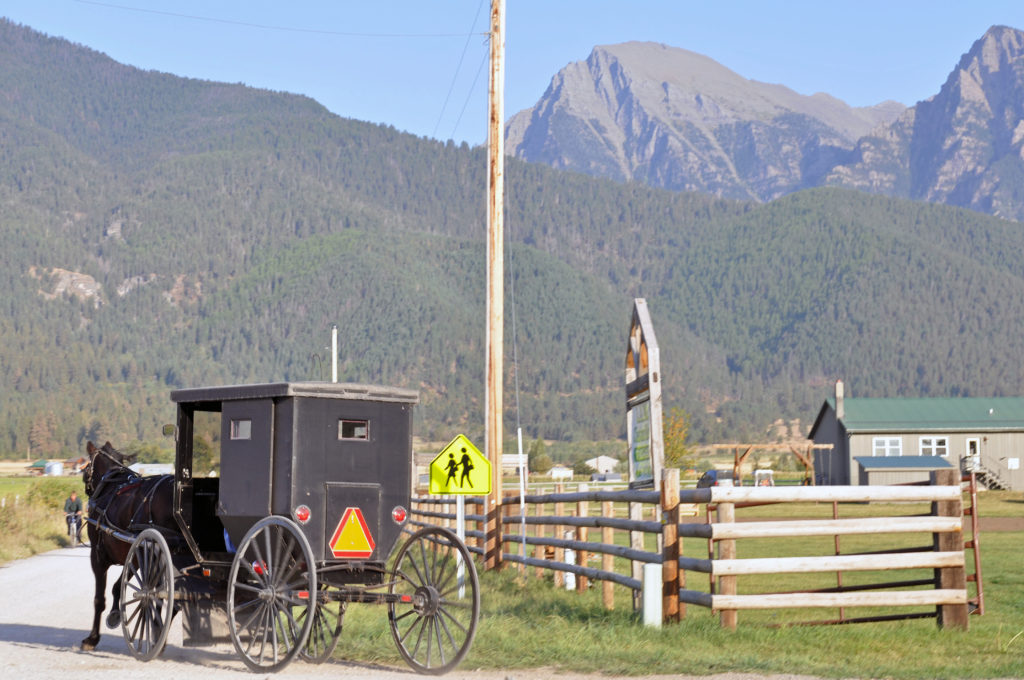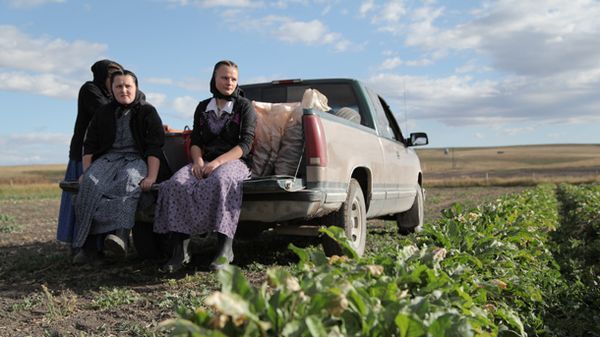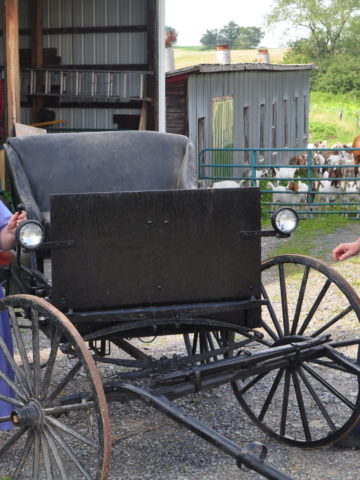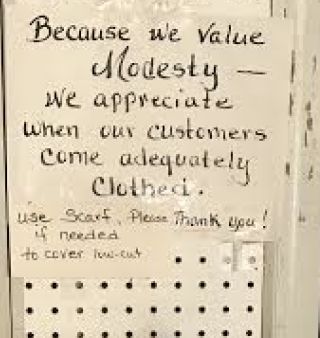Would you like to know the difference between Amish and Mennonites? And what about the Hutterites? Where do they fit in? If you often confuse these groups you are not alone. The Amish, Mennonites, and Hutterites come from the same post-Reformation religious movement known as Anabaptist (adult baptism), but the two groups have diverged in different directions and have split many times. One common thread is adult baptism, another commonality between all Anabaptists is their embrace of pacifist principles.
Jump to:
The Main Differences & Similarities (With Chart)
Here is an at-a-glance primer:
| Comparison | Amish | Mennonite | Hutterite |
|---|---|---|---|
| Beliefs & Values | Pacifism & Anabaptist | Pacifism & Anabaptist | Pacifism & Anabaptist |
| Founder | Jacob Ammon | Menno Simmons | Jakob Hutter |
| Notable Attire/Dress | solid colors, head-coverings and dresses for women, suspenders, and hats for men. | varies greatly by order. More conservative orders dress very much like the Amish, while more progressive Mennonites are indistinguishable from other mainline Protestant religions. | Head-coverings for women, denim and work-shirts for men. Women wear dresses, but colors are more vivid and patterns like polka dots and stripes are common. |
| Transport | mainly horse-and-buggy, some tractors | a mix of horse-and-buggy, tractors, and cars. | Hutterites live communally so travel, even short distances is more rare. Several people in each commune have drivers licenses |
| Church Services | Held in homes | Held in meetinghouses or churches | Held in a communal chapel |
| Beard/Facial Hair | Yes Beards | No facial hair for men | varies by colony |
| Technology | Limited use | More expansive use | embraces all technology |
| Women's Role | Women are homemakers or owners of home-based businesses. | Homemakers, some women-owned businesses, vary greatly by order. | Women do most of the domestic work on the colony |
Who Are The Amish?
The Amish are a Protestant group that grew out of the Reformation. The Amish church was founded by Jacob Ammon in Europe in the late 1600s. The Amish espoused a belief in Anabaptism, adult baptism. Whereas most churches practiced child baptism, Ammon and his followers believed that only adults could choose their religion. Ammon and his followers - soon known as Amish - were persecuted for their beliefs and chased around Europe before finally settling in the United States under the promise of William Penn's colony of religious freedom.

The Amish - on appearance - never really stood out much from other groups until the arrival of the 1900s. As other churches and society in general evolved and changed and modernity swept across the USA, the Amish never went along. So as the rest of society embraced cars, pop culture, and technology, the Amish stayed behind believing simplicity was their path to salvation. The Amish never adopted cars, kept electricity at arm's length, and even eschewed indoor plumbing. Many Amish believed that cameras captured their soul by capturing their image, and they stayed away from photography also.
The Amish also continued to worship in the homes of church members, a holdover of the days when they were persecuted and had to worship in secret. The Amish also held onto their German language.
Fast forward to today, and the Amish church is evolving and changing. Slowly, but steadily. The Amish church has divided many many times since its founding and there are liberal groups and conservative groups. More and more Amish are accepting photography as a fact of life, and worship is still done in peoples homes, although some Amish church districts are now adopting church buildings. Change is coming to the Amish, just slowly.
Who are the Mennonites?
The Mennonite church was actually founded almost 200 years before the Amish church. The Mennonites are founded by Menno Simons, who espoused the radical (for the time) idea of Anabaptism (adult baptism). Simons and his followers also embraced the philosophy of pacifism, that violence was never be practiced. Mennonites have long resisted war and other forms of violence. The Amish church split off from the Mennonites, the founders of the Amish church believed the Mennonites weren’t going far enough in espousing simplicity and separation.
Podcast on The Differences
What Are The Different Groups of Amish?
Nebraska Amish: this group is found primarily in Pennsylvania, but an early bishop had roots in Nebraska, hence the name even though none live in Nebraska. The Nebraska Amish are generally agreed to be the most conservative Amish. Men will wear straw hats, buggies have white tops, and amenities like indoor plumbing are not used, instead collecting rainwater is more common.
Swartzentruber Amish: their buggies are more traditional black, but the Swartzentrubers are also among the most conservative Amish. Most secular holidays, like New Year’s Day, are not observed by Swartzentruber-owned businesses and they generally don’t change their clocks with the rest of the United States during spring and fall.
Old Order Amish: this is the largest group of Amish, and they are variations within this group. Like the other Amish groups, they speak a dialect of German at home, and rely on horses and buggy for their everyday transportation. They will hire non-Amish people to drive cars. They will embrace varying levels of technology. Old Order Amish also practice home worship. Swiss dialects are spoken among the Old Order Amish of Berne, Indiana; Milroy, Indiana; Grabill, Indiana, and Seymour, Missouri. The Old Order, Nebraska, and Swartzentrubers still often employ shunning for church members who go astray, that means they are left out of church and family functions. Old Order Amish generally do not allow themselves to be photographed according to their interpretation of doctrine. Most will also forgo buttons on clothing, believing them to be too ornate.
New Order Amish: this group is much smaller than the Old Order Amish. They also use horses and buggy for travel and speak German at home. The main difference between the New Order Amish and the Old Order Amish is the practice of Sunday school at church for the children, and embracing overseas missionary work, and they are a more evangelical church than the older Amish who do not evangelize (see converts). New Order Amish are also much more permissive about having their photographs taken. Buttons can be found on their clothing.
New New Order Amish: this group is sometimes called the New Order Amish Fellowship, or the “Electric Amish “this group uses horses and buggy for local transportation, but they do accept electricity in the homes. These Amish generally don’t have TV, but they have adopted some limited use of the Internet
What Are The Different Groups of Mennonites?
Old Order Mennonites: this group is very similar to the Old Order Amish, the main difference is that some don’t always use the German dialect and that they worship in church buildings and not homes. They also don’t practice shunning.
Amish-Mennonites: These are churches of varying levels of conservativism. But more Amish-Mennonites dress plainly while still embracing technology like cars and smartphones. The Beachy Amish Mennonites, sometimes known just as "Beachy Amish" are actually Mennonites. They are a very conservative group, but still embrace technology in varying degrees.
Mennonite Church USA: this is a very broad group of Mennonites from more conservative plain dressing Mennonites to general conference Mennonites
Who Are The Hutterites?
The Hutterites emerged from the same Anabaptist post-Reformation tradition that the Amish and Mennonites did. The founder of the Hutterites was Jakob Hutter. Hutter also espoused adult baptism, however, the Hutterites took a communal view of doctrine. And they continue that communal view today. Hutterites also embrace technology. Hutterites dress plainly, but they use some of the most modern farming equipment, Internet, television, and all modern amenities. As far as driving goes, there’s usually one or two people on a colony that has a license to drive. Meals are eaten communally. A commune is usually a farm or manufacturing operation where everybody works together as a unit. There are variations among Hutterite colonies, with some being more conservative and others being more progressive. But the Hutterites have generally not been plagued with the same divisions that the Amish and Mennonites have experienced..
Other Subgroups
Lobelville Amish: This is a hybrid group that has churches in Lobelville, Tennessee; Pearisburg, Virginia, and Knox County, Ohio. Members dress plainly and use horse and buggy, but they incorporate some communal living elements from the Hutterites and have other doctrinal differences with the Amish.







Patricia Iberg
Thank you for writing this. I really enjoyed reading it. I miss living in Ohio by the Amish. I have watched specials on all the sects. It's very interesting to me. I have Amish in my background but no way of finding out info on it to trace anyone. My grandfather told me we were Pennsylvania Dutch. I didn't know what that meant then. I'm sure it was my great grandma her last name was wolf. Thats all the info I have. Thanks again for the info.
Diane White
Seems as though no matter what order of Faith that you belong to, someone gets a new idea and starts a new group just a little different than the other. This is certainly "mans" thinking and I doubt that God is particularly happy about the whole thing.
I include all mainline churches in this, not just Amish, Mennonite or Hutterites.
From what I have observed it is a main cause of division and judgement among the people. I fail to see any resolution to this practice, as we are all human sinners saved only by the Grace of God. We seem to believe that our own opinions are the ones everyone else should follow.
May God help us to see as He does.
Cliff Farion
Thank You very much for helping clear up questions I had concerning the relationship between Amish, Mennonites and Hutterites, as a respectful outsider it is important to me. In the area where I live we are close to mainly the Mennonite communities, but my parents came from western Canada and always spoke of the Hutterites. And do to Hollywood we have been exposed to movie Amish which is as we all know may not necessarily accurate. Your information and organization of the material in the presentation I think is excellent I can only hope I can retain it all.
Thank You Again